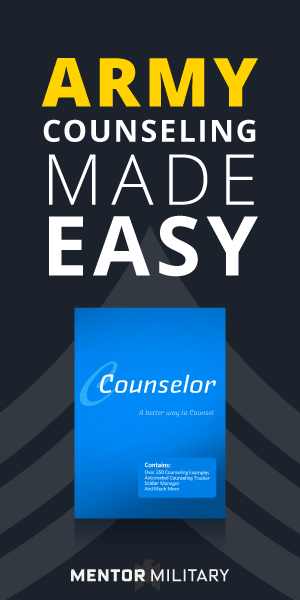When you are up against a problem in your unit, how do you react? This article contains some great tips about how to cope with an issue and resolve it in a professional manner.
Who do I talk to?

Before taking a complaint to the chain of command, be sure to have your facts/arguements clean and organized.
The military provides several channels to solve problems, but the most effective is almost always your chain of command. Sometimes Soldiers see the chain of command as part of the problem or believe that the chain of command does not care about their issue. While you can have personality conflicts with individuals in your chain of command odds are someone in your chain of command will listen to you if you are facing a legitimate problem.
Soldiers must understand the difference between reporting an actual issue and whining. Remember your chain of command is dealing with numerous issues to ensure mission success and they usually have between 120-150 Soldiers per unit. Leaders have a lot going on; their time is valuable. You must work with the system to make sure your problem is resolved. Here are some things you can do to expedite this process and increase your odds of success:
- Determine what the problem actually is. Find the root cause. Be able to explain it in simple terms.
- Decide what will make you happy or resolve the problem.
- Gather your facts.
- Organize your facts and prepare your argument before raising the issue.
- Approach your chain of command at the lowest possible level that has the authority to resolve the issue
- Be calm and professional. Never become emotional.
Odds are by following the steps above you just solved your problem at the lowest level and possibly got the result you were looking for because you brought a well thought out solution to the table. Do not just dump your problems on your chain–bring suggested solutions to the table.
Why handle it at the lowest possible level?

Always make sure you take the proper steps when utilizing your NCO support channel and chain of command.
If you jump to the top of the chain of command you eat up the precious time of senior leaders to solve a problem that may have been resolved at a lower level. This tends to frustrate senior personnel and you may lose their respect in the process.
The chain of command usually wants to do what’s right. Sure, sometimes you may have a leader who is emotionally involved or is “out to get someone,” but I can assure that when this happens it is usually easy to spot and the individual usually ends up on the wrong side of right with a loss of credibility and integrity.
Let’s say you have followed the steps above and you haven’t achieved results. You have taken it to your Squad Leader, Platoon Sergeant, and Platoon Leader and they do not see an issue or believe you are just whining. This is the point where you need to reevaluate your situation. Are you whining? Are you failing to properly present your issue? You must be honest with yourself.
If you believe in your issue, the next course of action is to take it up to the 1SG/Commander on open door policy. Usually by the time a problem has reached this level of leadership they are emotionally removed from the problem and can make an unbiased decision. If you have used your chain of command and followed the steps listed above, odds are your chain of command will respect your efforts and appreciate that you are working in the best interest of the unit. Should you not receive justice in your eyes you have other channels available to you. Depending on the type of problem, your options may include going to the IG, JAG, EO, or the Chaplain. You may also consider filing an article 138 complaint.

Circumventing the chain of command may be acceptable in very rare cases
Special Circumstances
You observed your platoon sergeant gambling with Soldiers in your platoon- report to the CDR/1SGYou saw your Company Commander kissing your buddy’s wife – report to the BNCSM/BNCDR
Notice I grouped the command team together. This will usually ensure your issue will be heard in a positive light because the command team is together dealing with the issue. You can speak to both of them at the same time by requesting to see them on their open door policy.
Most leaders want to do the right thing! Provide them the same opportunity you would want if you were in their position.
Related article: When should I go to the IG?
Read The Mentor: Everything you need to know about leadership and counseling for more information about Counseling, Leadership, Corrective Training, and Separations in the Army.














